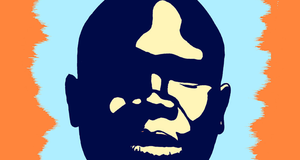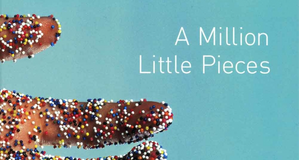Spiritual Autobiography and Dave Eggers' "What is the What"Through this simple association, the reader undoubtedly subscribes to the notion that what the speaker has to say contains truth and is worth noting. Eggers fully utilizes the powerful effects of religious associations to convey the importance of Valentino’s story of survival. Religious imagery and metaphors are also deeply rooted in the traditional spiritual autobiographies as demonstrated in Mary Rowlandson’s A Narrative in Captivity. Although written during very different times and places, Rowlandson and Eggers’ works share many of the same traditional spiritual characteristics. While more similar to Augustine in her inability to deviate from God’s role in her life, Rowlandson presents many Christian metaphors and biblical references that certainly have a place in What is the What. From the very beginning of her narrative, Mary Rowlandson interprets the various events during her captivity through a Christian lens. Not only does she attribute the survival of a few Christians to the power of God, but she also uses similes that are reminiscent of biblical analogies. She recalls the Native Americans’ first attack on her village and the commencement of her captivity, “It is a solemn sight to see so many Christians lying in their blood, some here, and some there, like a company of sheep torn by wolves… yet the Lord by His almighty power preserved a number of us from death” (Rowlandson, 2007, p. 237).Her comparison of Christians to “sheep torn by wolves” is a clear reference to Matthew 10:16, “I am sending you out like sheep among wolves. Therefore be as shrewd as snakes and as innocent as doves” (New International Version). Rowlandson completely embodies this biblical message throughout her captivity as she frequently attempts to emphasize her innocence and purity in her religious devotion. Like Rowlandson, Eggers employs a very similar reference to draw lines between those acting in a loving Christian manner and those who possess only brutality. Valentino’s interpretation of events has a mixed spiritual viewpoint; it is seated in both Christianity and in the tradition of the Dinka people. Like Rowlandson’s comparison of the Native Americans to wolves, Valentino compares the Arabs to lions who “love war and blood” and claims that their actions are “against the laws of God” (Eggers, 2006, p. 95). Comparing their behavior to those of animals is a simple application of metaphor that conveys much meaning and is not outside the scope of the religious stories in the Bible. Throughout the novel, the Arabs are a key source of the violence against the Dinka people. They are also not Christian, and their Muslim heritage is occasionally commented on through the descriptions of their dress, behavior, and sayings such as “Allah Akbar.” Interestingly, Valentino’s father stops the Arabs from having him repeat the latter expression, which means “God is great,” emphasizing the interpretation of two separate Gods between Muslims and Christians during this period. The religious and political tension between the two groups is manifested in the violence of the Sudanese Civil War and is conveyed in the simply religious style of these metaphors. Interestingly, of the many traditional spiritual autobiographies, the narrative of What is the What is most similar to that of Mary Rowlandson. Valentino Deng and Mary Rowlandson have very similar plots and narratives as they are both forced to leave their homes and seek stability and safety. However, while Rowlandson maintains the belief that everything is good because God ordained it so, Valentino begins to question God and his seeming abandonment of the Lost Boys, an act many of the traditional spiritual autobiographers would not dare to follow. Mary Rowlandson also appears to specifically describe minute daily occurrences in favor of discussing God and his role in her life. Valentino is more realistic in the struggle for survival, calling out to God in times of extreme need, but maintaining his independence as he makes decisions of his own and focuses on the present reality in a clear style of life-writing. Egger’s distinct use of recognized life-writing traits in the speaker’s reflections and unique prayers to God greatly contributes to the creation of What is the What as a new form of spiritual autobiography. The traditional spiritual autobiographers had little care for establishing reliable facts or premises. Instead, they relied upon the authority of religion and their undying devotions to God to solidify their authority as reputable sources of how to live and to confirm the accuracy in their portrayal of the events in their lives. As in Eggers’ novel, the practice of life writing seeks to create a foundation of reliable facts and from this basis, proposes plausible rationalizations and interpretations for particular events. “Life writing, by virtue of its defining movement… requires of its writers and readers alike constantly searching examination (and self-examination) of how one discovers and measures the significance of various factors in the subject’s life” (Parke, 2001, p. 933). Effective life-writers use a platform of logic and factual reliability as a point to look both backwards and forwards on their life and offer explanations of deeper meaning for how their past behavior and experiences have shaped their current condition and plans. Based on historical events, What is the What establishes its authenticity through its accurate account of various occurrences in the Sudanese Civil War of the mid-1980s. Also, the book’s narrator, Valentino Achak Deng, is based on a real person who addresses the readers directly in the preface and briefly explains how his story has evolved into this novel with a certain air of truth, “Though it is fictionalized, it should be noted that the world I have known is not so different from the one depicted within these pages” (Eggers, 2006, p. 5). This novel makes multiple gestures to help readers recognize it as a reputable source. Even including a preface written by the real Valentino supports the story’s veracity; however, a critical reader can recognize that the voice of these words are not very different from those of Eggers throughout the novel and were likely not truly written by Valentino alone. Also, accompanying the preface is a map of Sudan, Ethiopia, and Kenya, allowing the reader to view the logical progression of the narrator throughout Africa during the war. From this position of veracity and logic, the speaker is able to build and support an interpretation of his experiences that demonstrates a spiritual understanding and a constant searching for God and physical salvation. Demonstrating such a deep respect for God and devotion to religion circuitously supports the novel’s veracity as well. The ability to reflect on life’s events and attribute different meanings and lessons reveals a certain maturity in the speaker. Throughout What is the What, the reader witnesses the speaker’s development from a young, innocent, starving boy, who does not understand the chaos in the world around him, to a struggling, mature, grounded man, who has very much been affected by his past experiences, as Valentino writes in the preface, “Even when my hours were darkest, I believed that some day I could share my experiences with readers, so as to prevent the same horrors from repeating themselves” (Eggers, 2006, p. 5). Despite describing many horrific hardships and extreme suffering, the speaker seems to grow through his retelling and finds peace in knowing that his story is being told. In an article published in Pastoral Psychology, Mary Clark Moschella presents a psychological view to writing spiritual autobiographies and the positive effect they have on older adults. She explains, “The process of composing one’s spiritual autobiography is often a life-giving activity…The act of writing or telling one’s story is a brave and daring endeavor. It involves naming one’s own reality, calling it something” (Moschella, 2011). By helping their authors find meaning in their lives, spiritual autobiographies provide new perspectives for analyzing traumatic events and appreciation for how one has developed despite such circumstances. Also, being able to describe these events and calling them by name gives the spiritual autobiographer a control over these events that he or she never had when initially experiencing them. For example, Valentino’s ability to detail the beating of his father, murder of his family, and burning of his village gives him a new power over these events to which he was once helpless. While he cannot change the horror, by publishing his story he is able to warn readers of its ability to occur again and complete his mission to attest to such events and the lessons learned. For many individuals religion is the first source of knowledge and lesson; consequently, it is a primary source of authenticity in What is the What. Even the title emphasizes the importance of the story of God and the Dinka people as the What refers to a native creation story. As the novel essentially commemorates and gives life to the memory of those lost in the Sudanese Civil War and to the struggles endured by the Lost Boy, the speaker’s reflections and examinations give meaning to this experience as a Lost Boy through a religious and cultural view, as he attempts to define “the What.” In the original Dinka creation story, God offers the Dinka people a cow or the mystical What. The first man and woman realized that they would be fools to gamble and take the What over the cattle, which could provide them both food and drink. This creation story explains, “[God] was testing the man, to see if he could appreciate what he had been given, if he could take pleasure in the bounty before him, rather than trade it for the unknown” (Eggers, 2006, p. 63). Through this story, it is clear that the culture of the Dinka people is rooted in the idea of being tested by God. In his article, “Rescripting Spiritual Autobiography,” David Martin (2006) explains this choice to incorporate cultural stories in such writings, “We 'make up', we invent, our minds within the constricting ambience of culture by selection from the motifs it has on offer” (p. 92). Valentino’s inclusion of this story tells the readers much about his perspective on life and the origin of the meanings he develops through both the Dinka culture and Christianity.Continued on Next Page » Suggested Reading from Inquiries Journal
Inquiries Journal provides undergraduate and graduate students around the world a platform for the wide dissemination of academic work over a range of core disciplines. Representing the work of students from hundreds of institutions around the globe, Inquiries Journal's large database of academic articles is completely free. Learn more | Blog | Submit Latest in Literature |


















